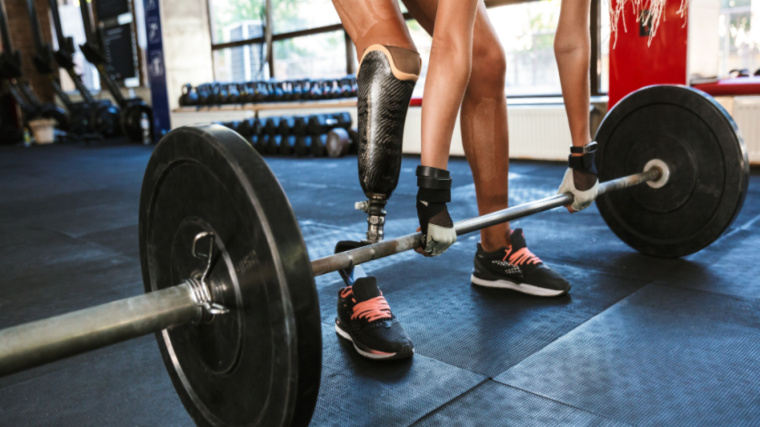
Most Common Mistakes in Strength Programming
Introduction: Strength Without Structure Is Just Lifting
Every athlete wants to get stronger, but not everyone gets results.
The reason often isn’t lack of effort — it’s poor programming.
In strength and conditioning, success depends on how well your training plan aligns with science. A strong athlete isn’t just built in the gym; they’re built through smart programming, precise progression, and recovery management. Here are the most common mistakes NASC coaches see — and how to fix them using evidence-based strategies.
1. Ignoring Progressive Overload
The most fundamental law of training is progressive overload — gradually increasing the demand on your muscles over time. Yet, many athletes fall into the trap of doing the same weights, reps, and exercises week after week.
Without overload, your body adapts and stops progressing.
Fix it:
-
Track your volume (sets × reps × load).
-
Increase load by 2–5% when you hit your rep target easily.
-
Manipulate other variables: tempo, density, rest time, or exercise complexity.
“If the load never changes, the body never needs to.”
— NASC Training Principle
2. Too Much Volume, Not Enough Intensity
Many athletes believe “more is better.” They add more sets, more exercises, and more sessions — but forget that quality beats quantity. Excessive volume without proper intensity only leads to fatigue, not progress.
Fix it:
-
Focus on effective reps — the ones near muscular failure.
-
Use RPE (Rate of Perceived Exertion) or %1RM to ensure load is challenging.
-
Alternate high-volume and high-intensity weeks for balance.
Remember: stimulate, don’t annihilate.
3. Random Workouts, No Periodization
Jumping between workouts or copying what’s trending online destroys progression. Without structure, you’re just collecting workouts — not building a program. Periodization (planned training cycles) allows you to manage fatigue, peak performance, and recovery systematically.
Fix it:
-
Use structured phases:
-
Accumulation Phase – Build work capacity and technical base.
-
Intensification Phase – Increase load, reduce volume.
-
Realization Phase – Peak strength or performance.
-
-
Schedule deload weeks every 4–6 weeks.
This structure turns effort into measurable, repeatable progress.
4. Neglecting Recovery
Training breaks your body down. Recovery builds it back stronger. Ignoring sleep, nutrition, or rest days is one of the biggest silent killers of progress. Even the best program fails without sufficient recovery.
Fix it:
-
Sleep 7–9 hours per night.
-
Eat adequate protein (1.6–2.2g/kg/day).
-
Monitor HRV or resting heart rate to detect fatigue.
-
Reduce load after high-stress competition or travel.
“You don’t grow in the gym — you grow between sessions.”
— NASC Recovery Principle
5. Poor Technique and Movement Quality
Chasing heavier weights with bad form doesn’t make you stronger — it makes you weaker over time. Poor mechanics waste energy, limit power output, and increase injury risk.
Fix it:
-
Master movement patterns before adding load.
-
Use video feedback or bar velocity tracking to analyse form.
-
Strengthen weak links (e.g., core, scapular stability, hip control).
A strong athlete moves well — strength without control is chaos.
6. Ignoring Individual Differences
Every athlete is unique. Copying someone else’s program ignores differences in genetics, recovery capacity, and experience level. This leads to overtraining for some, undertraining for others.
Fix it:
-
Track each athlete’s response: speed, fatigue, soreness, motivation.
-
Adjust volume, intensity, and exercise selection individually.
-
Retest performance regularly to identify plateaus.
NASC coaches are trained to personalise — not generalise — programs based on data and observation.
7. Failing to Measure Progress
If you don’t test, you’re just guessing. Without tracking key metrics, you can’t know if your program is working.
Fix it:
-
Measure key lifts (e.g., squat, bench, deadlift 1RM).
-
Monitor velocity or power output across phases.
-
Record training logs weekly to detect trends.
Data turns training into science — and science turns strength into performance.
Conclusion: Program with Purpose
A great strength program is simple, structured, and strategic. Avoid these mistakes, and you’ll move from training hard to training smart. At NASC, we teach coaches to base every decision on evidence — not emotion. Because in the world of performance, discipline and data always win.
References
-
Schoenfeld, B. J. (2010). The mechanisms of muscle hypertrophy and their application to resistance training. Journal of Strength and Conditioning Research.
-
Fry, A. C., & Kraemer, W. J. (1997). Resistance exercise overtraining and overreaching: neuroendocrine responses. Sports Medicine.



